Pandora was hauled a few days ago to repair a damaged prop shaft. It pains me to be in this position as it’s one of those “invisible” upgrades that are essential, cost a lot, but don’t show to the casual eye. And, to make matters worse, as is always the case, it now appears that the project is bigger than expected.
I’ll need a new shaft, cutlass bearing, prop and repairs to the linkage that failed to hold the shaft as well. Oh yeah, after 16 years, my Autoprop is also in need of some serious love. Sadly, after a careful evaluation, in spite of years of happy service, I have decided to go with another brand, a new prop. More about that in a later post.
I replaced the shaft in our last Pandora, a SAGA 43. That was a pretty big deal and more than a few boat dollars. In that particular case, some fishing line, wrapped around the shaft and migrated into the cutlass bearing and created some grooves in the SS shaft. Hard to believe that nylon line could wear stainless but it did.
The good news is that all the plans for the shaft, prop and the rest of the gear in that general neighborhood is in place so I expect that Pandora will be back in the water in about 10 days. To keep myself sane when facing thousands of dollars in repairs, I like to think “happy thoughts”, like what we will do next season.
And, speaking of “next season”, setting aside that we are technically in season for most here in the North East, this year our “off season” will be more “on” than in the last few years as I am hosting an event here in Essex for the Salty Dawgs and Ocean Cruising Club. And, I am also planning a “mini cruise” with some of these folks in early July. More trips out I expect during the summer before I get serious about getting ready to head to Antigua.
Sure, we are now “post” Memorial Day and there are a lot more boats in the harbor. I am always amazed to see how many boats are not in the water by Memorial Day, the “sacred weekend” a deadline that always loomed large when I was part of the working world. In all of my “pre-retired” years of sailing I believe that I only missed two memorial day weekends, rain or shine, on the water and those were not for a lack of trying.
So, back to the title of this post and the question of what we are planning for next season. It’s particularly timely as we are now into our second decade as “snowbirds” and as much as Brenda would like to think otherwise, there is no obvious end in sight. So far, so good.
After our arrival in Antigua in November, I expect that we will head north, perhaps south first to Guadeloupe for some rum, but then begin our run north, heading to St Martin and onto the Virgins.
I am in discussions with the Nanny Cay resort in the British Virgins about doing a rendezvous there in early March. The BVI got a bad rep after treating cruisers badly during the pandemic, impounding boats for the most trivial of transgressions and most cruisers have abandoned them for the much more friendly USVI which are only a few miles away.
Hoping to put things right, the manager of Nanny Cay Marina contacted me and wants to see what he can do to bring the cruising community back. I do think that it would be great if we could put a rendezvous together. The last time I was there was in the spring of 2017 when I participated in my first Homeward Bound Rally with the Salty Dawg Sailing Association.
The facility was trashed in a hurricane a number of years ago and has been completely restored. It will be interesting to see what it’s like. It was pretty nice years ago. This is a post I did after that visit.
From there perhaps we will spend some time in the USVI, the Spanish Virgins, Puerto Rico, The Dominican Republic and then up through the Bahamas. At the end of the season I expect we will make a run to the US, perhaps for a time in Charleston before I run Pandora back to CT.
All of that would bring us full circle.
Back in 2012, and our first run south, we visited the Bahamas and continued to do so each season until 2016 when we headed to Cuba and then, in recent years, to the Caribbean.
We really enjoyed the Bahamas which are blessed with some of the clearest waters in the world.
The Bahamas are very shallow with an average depth of about 6′ and with a tidal range of 18″, and with all that water flowing in and out twice a day nearly half of the water in the entire country is replenished every day. And, as the waters adjacent to all that shallow water is thousands of feet deep, the water coming into the shallows is very clear.
I was blown away when I first encountered water that clear. After sailing in Long Island Sound, where two to three foot visibility is the norm, I didn’t quite know what to make of seeing upwards of 100′ underwater.
Imagine hanging off of the back of your boat and seeing the anchor in the sand…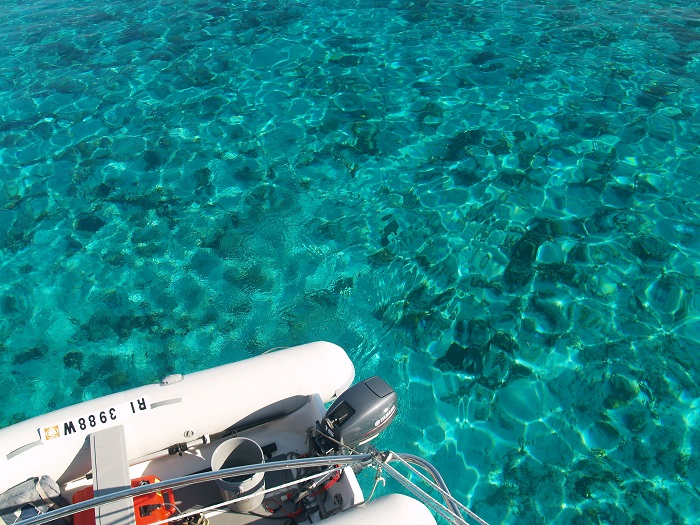 We sailed over 1,000 miles in the Bahamas that first year. That was partly because every few days a cold front would come crashing down from the north bringing unfavorable winds so we had to move somewhere else and scramble for cover as there is very little in the way of 360 degree shelter in the Bahamas.
We sailed over 1,000 miles in the Bahamas that first year. That was partly because every few days a cold front would come crashing down from the north bringing unfavorable winds so we had to move somewhere else and scramble for cover as there is very little in the way of 360 degree shelter in the Bahamas.
We met many characters along the way like this guy who was cruising with friends. He was a nice young man but would have been my worse nightmare if I had a daughter. “Daddy, this is my new friend Jason. He has a sailboat and has invited me to cruise with him. You like boats, right?”Sh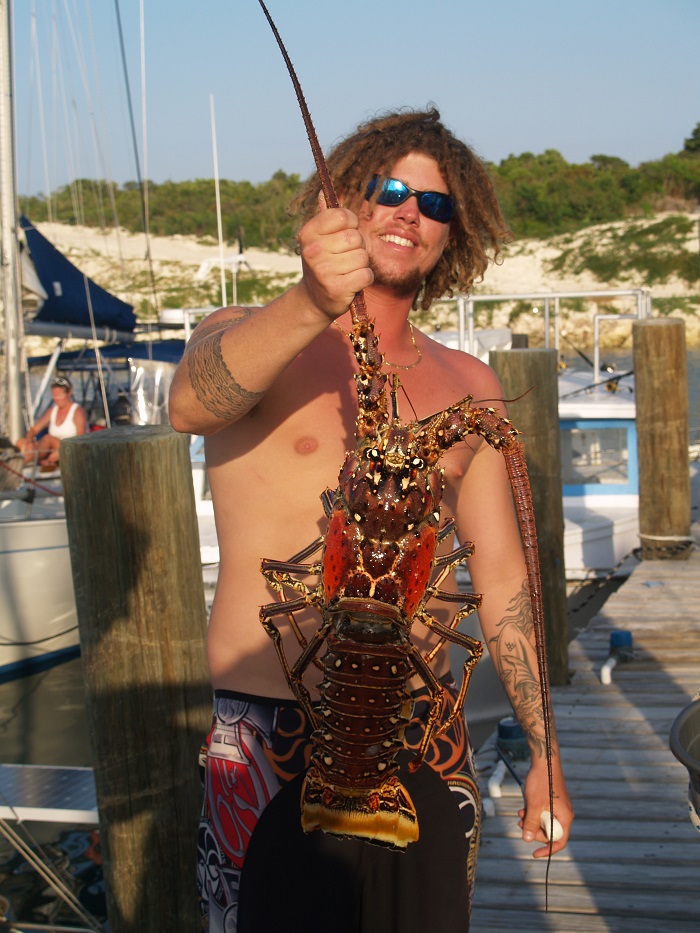 Brenda is still creative aboard and completes projects afloat every season.
Brenda is still creative aboard and completes projects afloat every season. 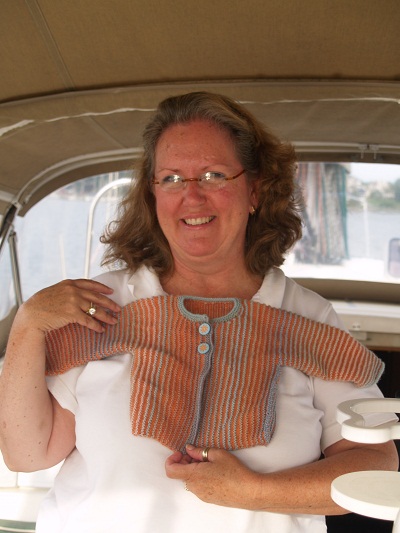
And I can still fit into this wetsuit, a decade later.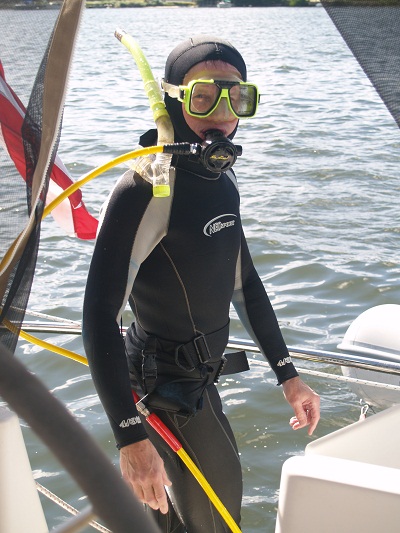
On our first run south in 2012 we met Bill and Maureen aboard Kalunamoo and still hang out with them every season more than a decade later.![]</p](https://www.sailpandora.com/wp-content/uploads/2023/06/2-25-13a-072.jpg) Not sure about this shot but it seemed like a good idea at the time.
Not sure about this shot but it seemed like a good idea at the time.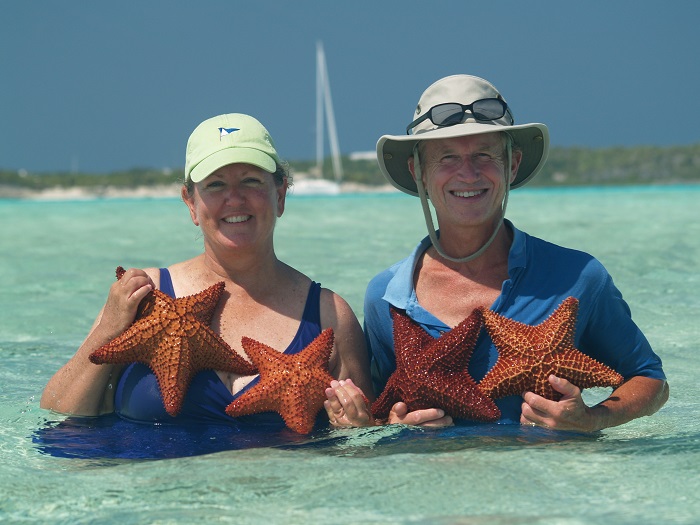 We also got to know the owners of Ariel, now our Pandora. After years of arriving in port hours after them we now own her and beat most other boats to anchor. She’s now a lovely grey color but still the same great boat.
We also got to know the owners of Ariel, now our Pandora. After years of arriving in port hours after them we now own her and beat most other boats to anchor. She’s now a lovely grey color but still the same great boat.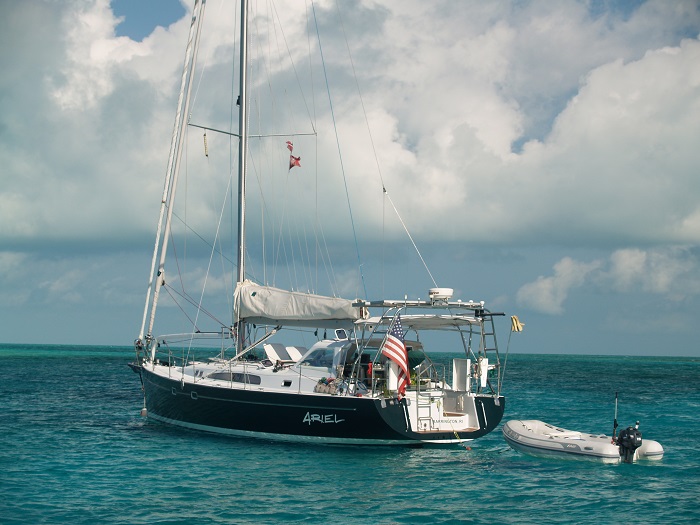 The biggest problem with cruising the Bahamas is that when a cold front exits the US it comes crashing to the south, bringing with it clocking winds that force everyone to run for cover lest they find themselves on a lee shore. There are very few places in the Bahamas that have protection from the west winds that follow a cold front.
The biggest problem with cruising the Bahamas is that when a cold front exits the US it comes crashing to the south, bringing with it clocking winds that force everyone to run for cover lest they find themselves on a lee shore. There are very few places in the Bahamas that have protection from the west winds that follow a cold front.
It’s also a very rural area with minimal infrastructure so there aren’t many places to eat out. And, if you can’t take a lot of sun, like Brenda post melanoma, there’s not a lot to do. There are beautiful beaches and the water is great but not so great for the sun adverse.
However, it’s a beautiful place and there will be a certain symmetry in heading back to the islands that began our winter cruising more than a decade ago when we headed south to begin our first big voyage.
A lot of water has gone under the keel since we first ran down the coast of New Jersey to begin or lives as snowbirds and what a ride it’s been.
And as we posed for this picture on our first stop in 2012 at the Fayerweather Yacht Club in Bridgeport CT. In it’s own way, that was a full circle too as that’s where we kept our very first boat, our 20′ Cape Cod Catboat back in the early 80s. 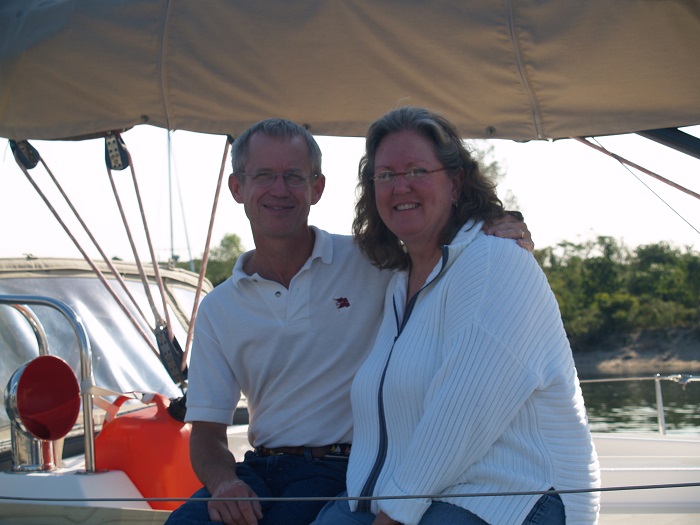 I only regret is that I am now 68 which seems pretty old to me. Or, at least a lot older than when we used to go sailing on Tao, our 20′ catboat.
I only regret is that I am now 68 which seems pretty old to me. Or, at least a lot older than when we used to go sailing on Tao, our 20′ catboat.
Or, as one of our boys said to Brenda on her birthday so long ago, “Happy Birthday Mom, you are really old now”. He meant that as a compliment from at the time as from his perspective older was better, the way the very young look at the process of aging.
Out of the mouths of babes, no truer words were ever spoken.
I may be old but grass isn’t growing under our feet any time soon.
Poor Brenda, being dragged all over Hell’s half acre and a plan to head back to the Bahamas one more time, bringing things full circle after all these years.
At least she is smiling. That’s my girl…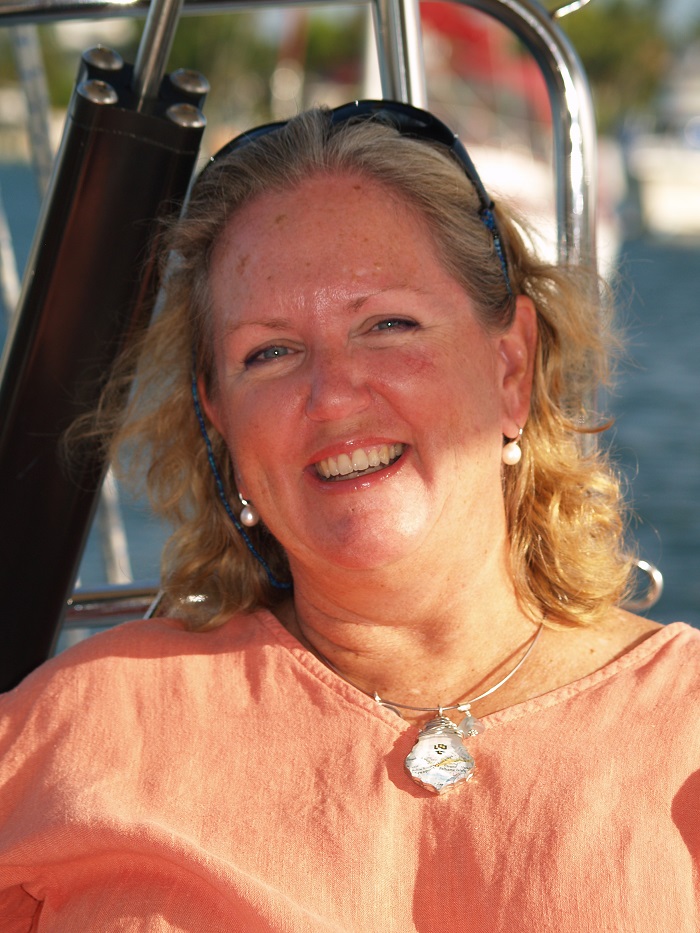
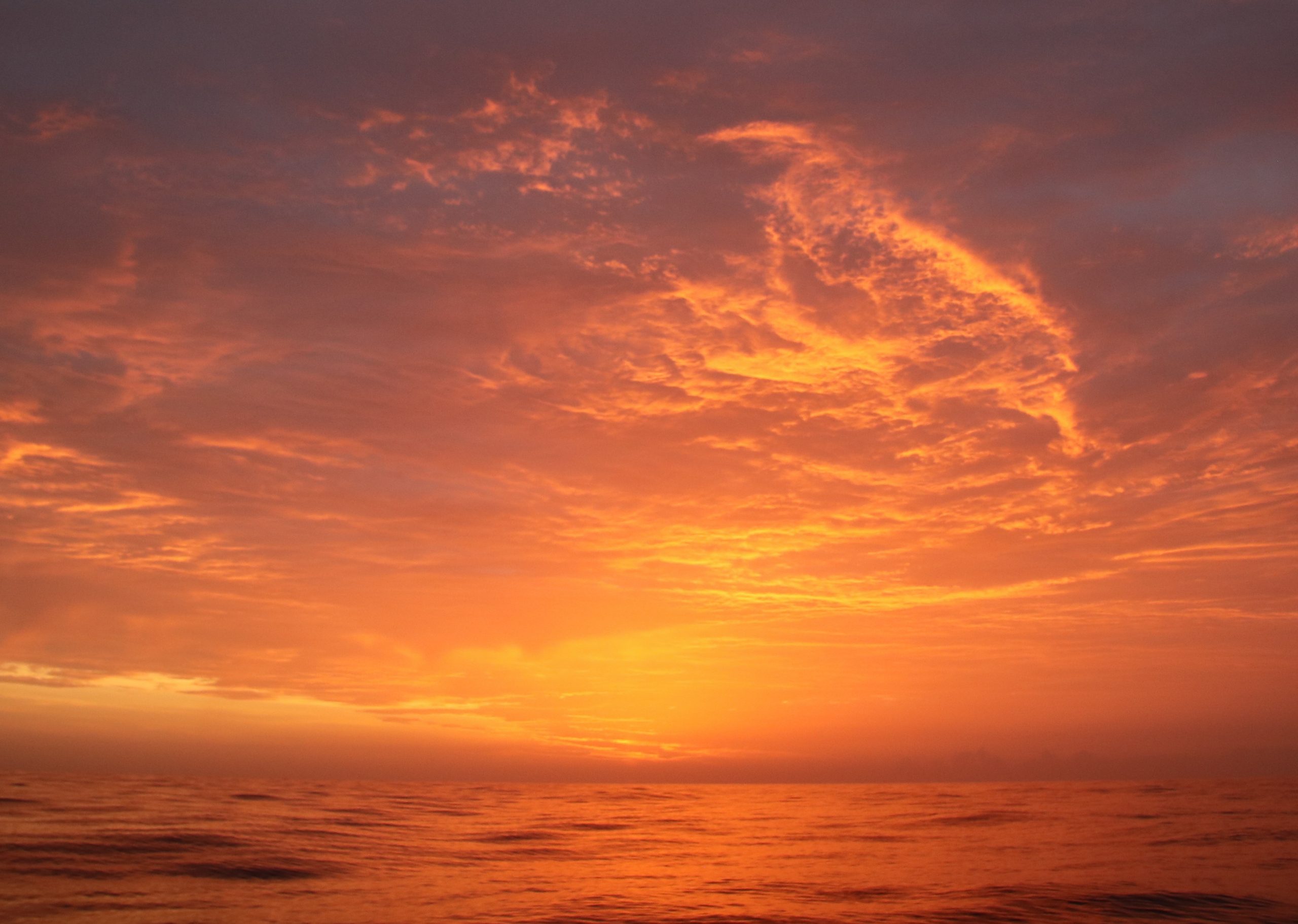 And, here is what the Cloud Appreciation Society had to say about “my cloud”.
And, here is what the Cloud Appreciation Society had to say about “my cloud”.
 We sailed over 1,000 miles in the Bahamas that first year. That was partly because every few days a cold front would come crashing down from the north bringing unfavorable winds so we had to move somewhere else and scramble for cover as there is very little in the way of 360 degree shelter in the Bahamas.
We sailed over 1,000 miles in the Bahamas that first year. That was partly because every few days a cold front would come crashing down from the north bringing unfavorable winds so we had to move somewhere else and scramble for cover as there is very little in the way of 360 degree shelter in the Bahamas. Brenda is still creative aboard and completes projects afloat every season.
Brenda is still creative aboard and completes projects afloat every season. 

![]</p](https://www.sailpandora.com/wp-content/uploads/2023/06/2-25-13a-072.jpg) Not sure about this shot but it seemed like a good idea at the time.
Not sure about this shot but it seemed like a good idea at the time. We also got to know the owners of Ariel, now our Pandora. After years of arriving in port hours after them we now own her and beat most other boats to anchor. She’s now a lovely grey color but still the same great boat.
We also got to know the owners of Ariel, now our Pandora. After years of arriving in port hours after them we now own her and beat most other boats to anchor. She’s now a lovely grey color but still the same great boat. The biggest problem with cruising the Bahamas is that when a cold front exits the US it comes crashing to the south, bringing with it clocking winds that force everyone to run for cover lest they find themselves on a lee shore. There are very few places in the Bahamas that have protection from the west winds that follow a cold front.
The biggest problem with cruising the Bahamas is that when a cold front exits the US it comes crashing to the south, bringing with it clocking winds that force everyone to run for cover lest they find themselves on a lee shore. There are very few places in the Bahamas that have protection from the west winds that follow a cold front. I only regret is that I am now 68 which seems pretty old to me. Or, at least a lot older than when we used to go sailing on Tao, our 20′ catboat.
I only regret is that I am now 68 which seems pretty old to me. Or, at least a lot older than when we used to go sailing on Tao, our 20′ catboat.
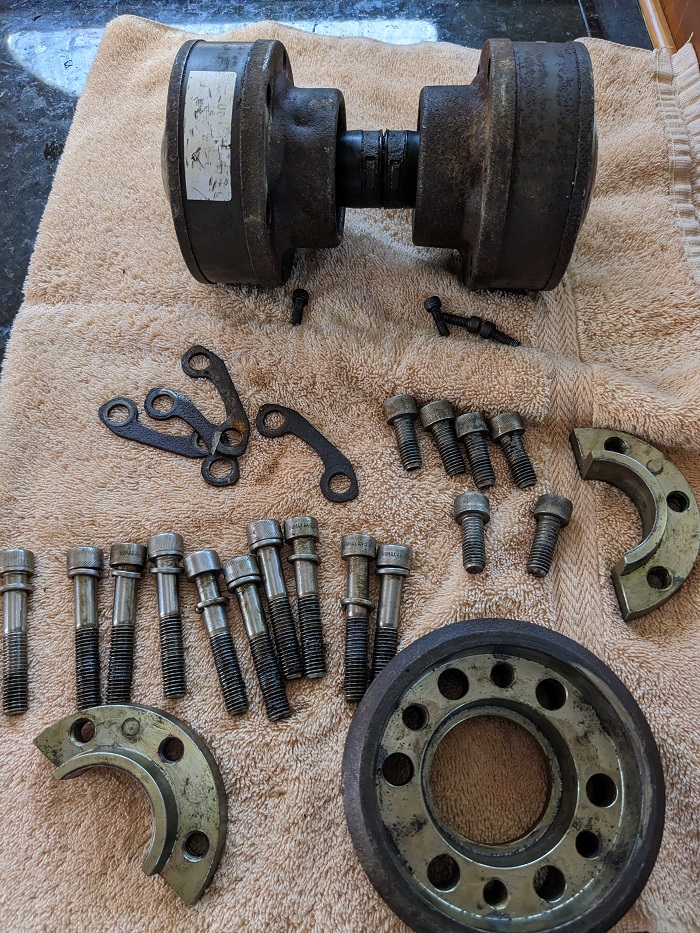 The back end of the transmission.
The back end of the transmission. 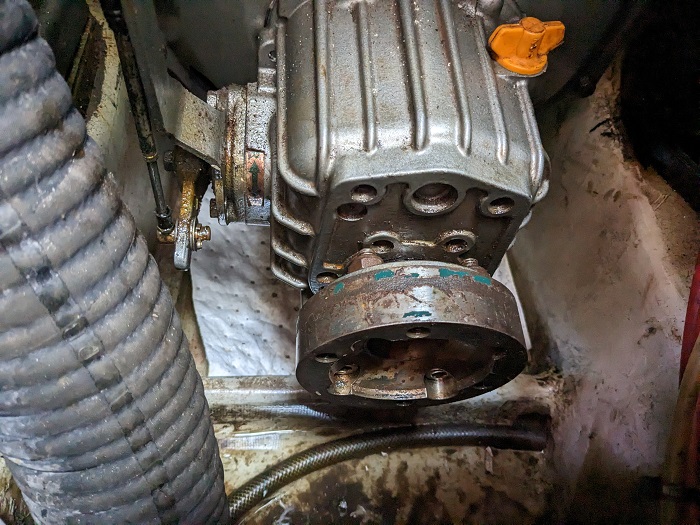 It seems that the end of the prop shaft, that inserts into the coupling, had slipped a lot and was quite chewed up.
It seems that the end of the prop shaft, that inserts into the coupling, had slipped a lot and was quite chewed up. 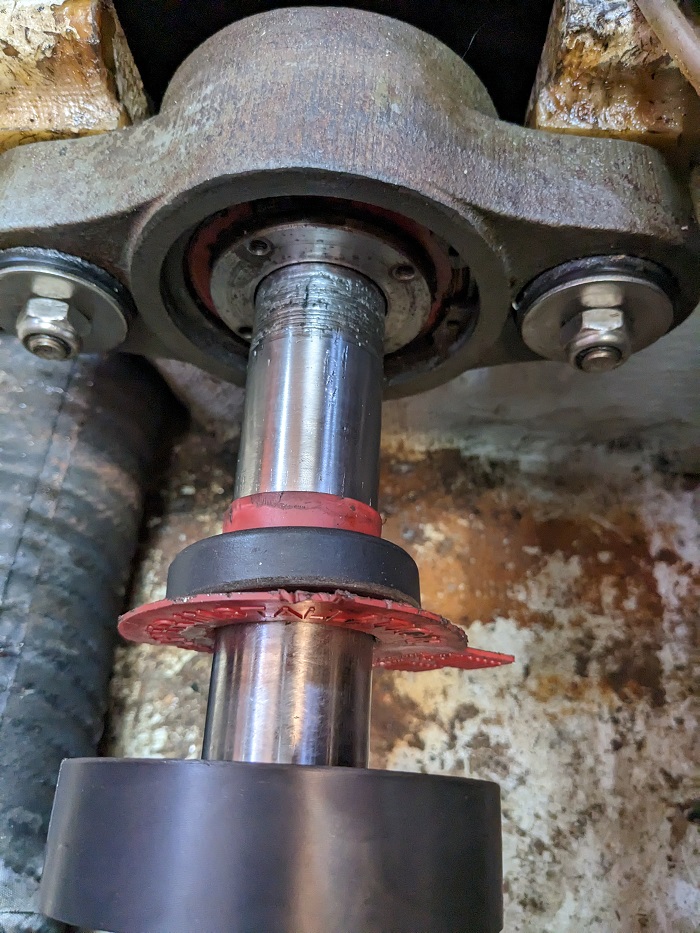 I took a few more hours to put everything back together, satisfied that I had done the best job that I could, I put the engine in reverse and revved it up to see if my work held…
I took a few more hours to put everything back together, satisfied that I had done the best job that I could, I put the engine in reverse and revved it up to see if my work held…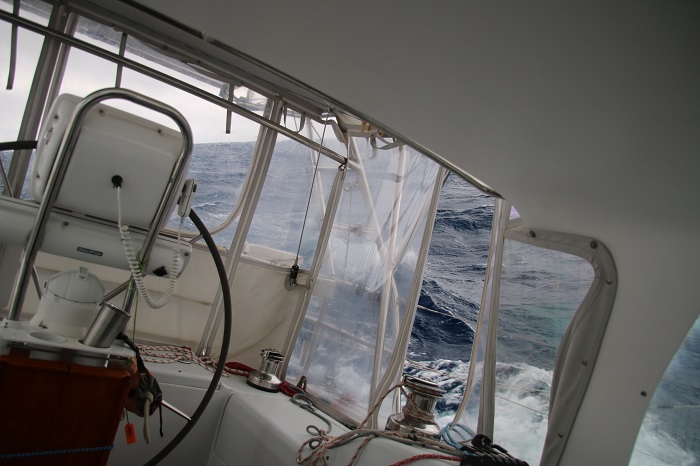 It’s impossible to get a shot of a wave that does justice to what we were encountering. Every once in a while, a wave would hit the stern windward quarter and slew us around so we had to be constantly cautious not to end up in a violent jibe.
It’s impossible to get a shot of a wave that does justice to what we were encountering. Every once in a while, a wave would hit the stern windward quarter and slew us around so we had to be constantly cautious not to end up in a violent jibe. 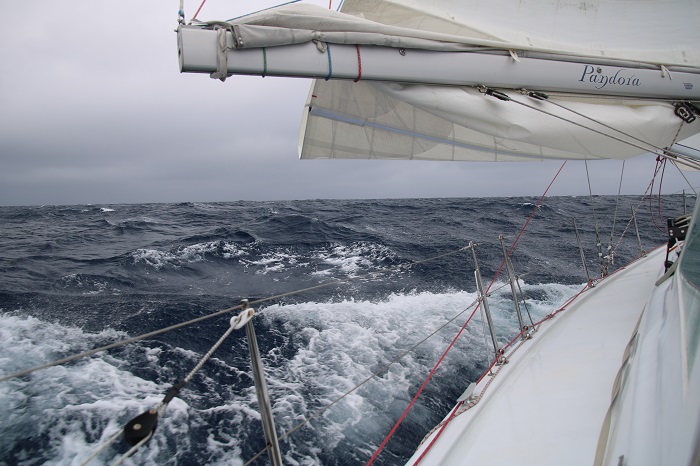 As we made our way across the GS, we decided that we had to jibe at about 02:00 to keep from going to far to the east before exiting the current. We must have spent about 15 minutes setting up the preventer and getting ready to switch tacks. It was uneventful but plenty unnerving with more than 40kts on the stern.
As we made our way across the GS, we decided that we had to jibe at about 02:00 to keep from going to far to the east before exiting the current. We must have spent about 15 minutes setting up the preventer and getting ready to switch tacks. It was uneventful but plenty unnerving with more than 40kts on the stern.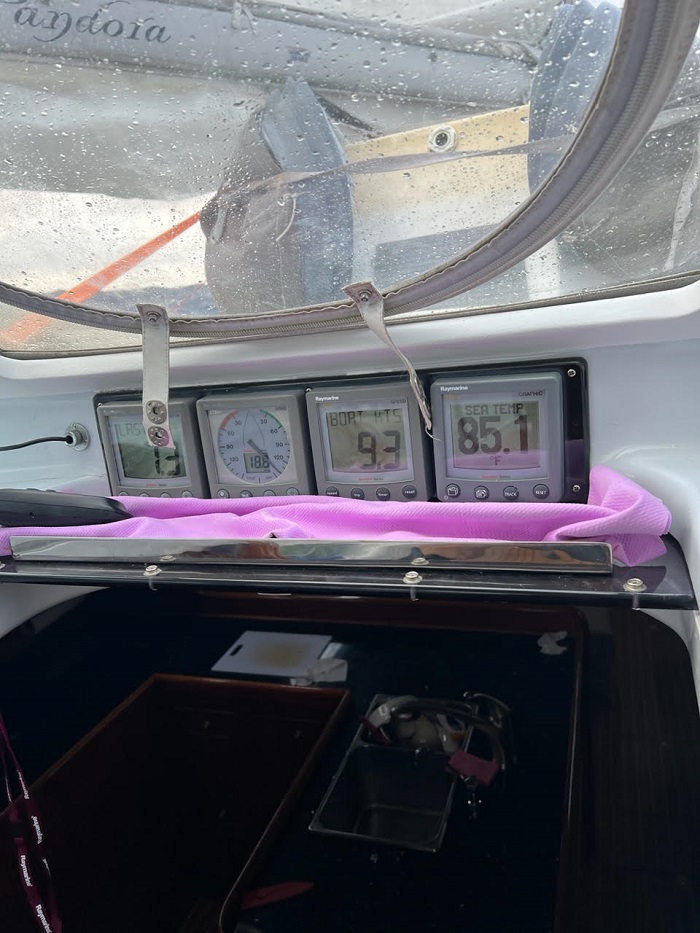 An uncontrolled jibe in those conditions could have taken out the boom or worse.
An uncontrolled jibe in those conditions could have taken out the boom or worse. 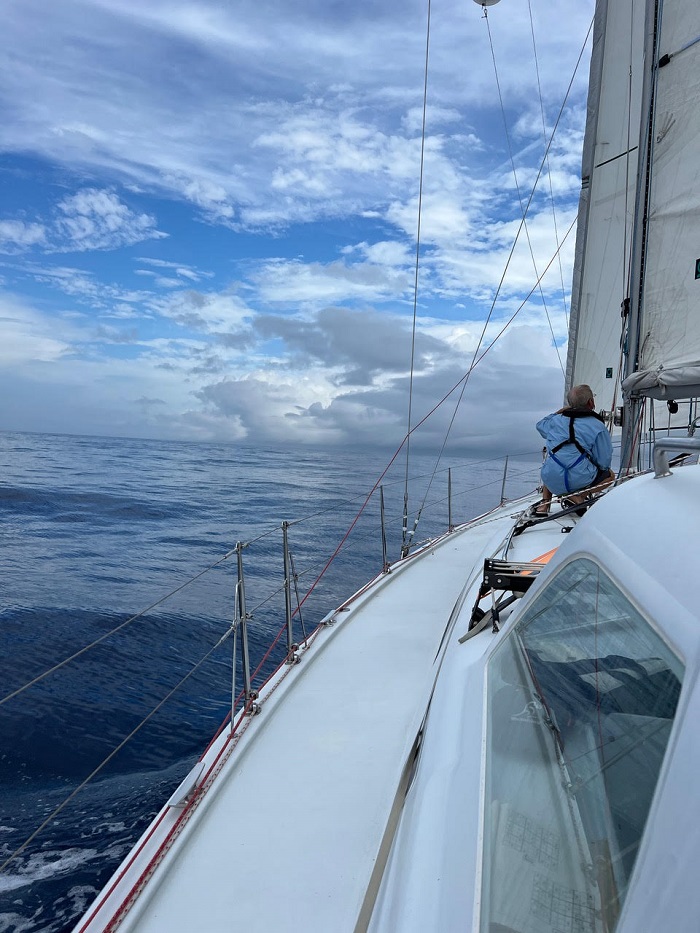 We saw some amazing sunsets, including a “green flash” that was the most amazing that I’ve seen. The sun set below the horizon and then there was a very bright green flash that was more like a flashbulb than a sunset.
We saw some amazing sunsets, including a “green flash” that was the most amazing that I’ve seen. The sun set below the horizon and then there was a very bright green flash that was more like a flashbulb than a sunset.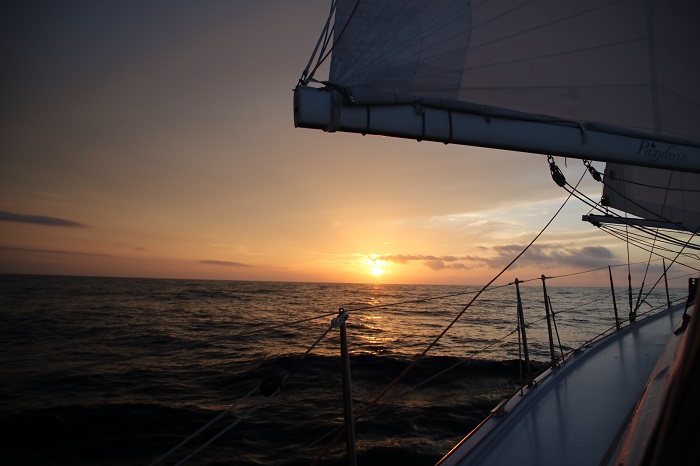 Nor did the sunsets. Or, was this another sunrise? Hard to say but beautiful, never the less.
Nor did the sunsets. Or, was this another sunrise? Hard to say but beautiful, never the less. 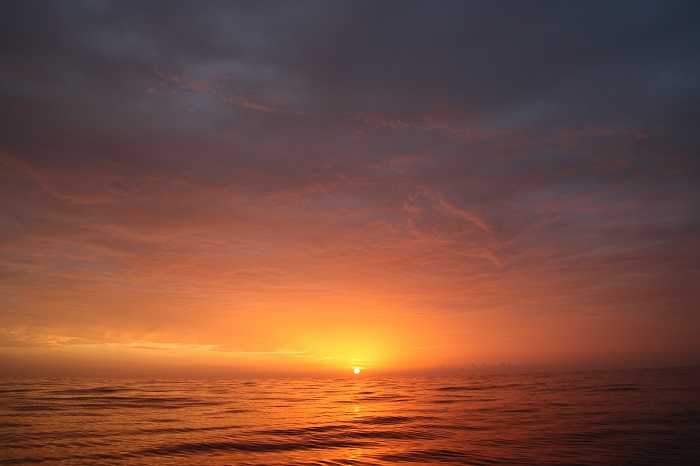 Our last sunrise at sea as we rounded the eastern tip of Long Island, Montauk.
Our last sunrise at sea as we rounded the eastern tip of Long Island, Montauk.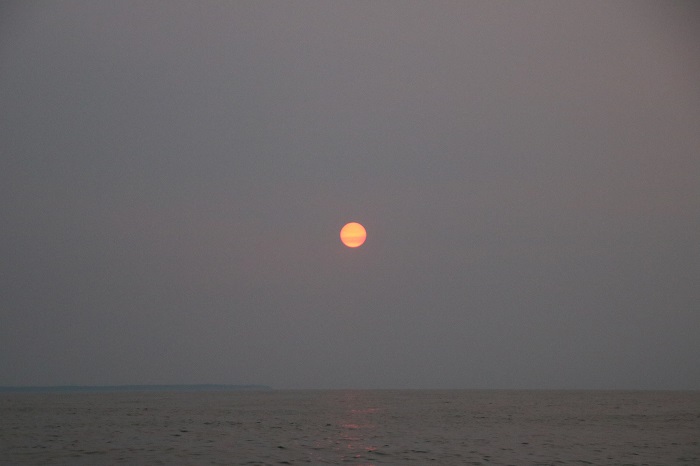 And the historic Montauk light.
And the historic Montauk light. 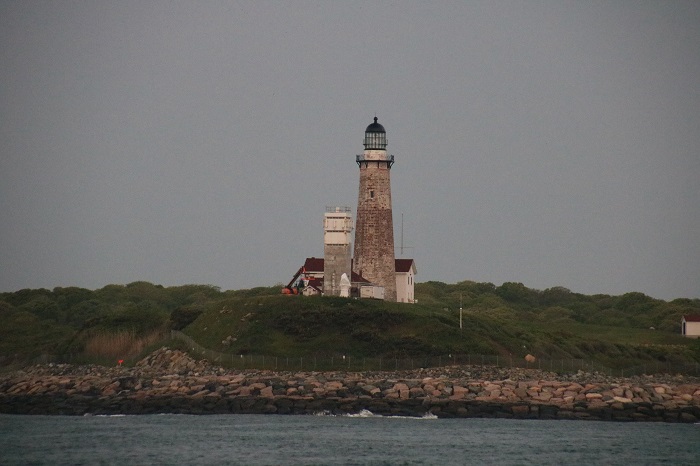 I always look forward to the run up Long Island Sound to the CT River and hope for a fair wind and favorable tide. Wishing for a gentle sail to cap on the last leg to finish up a long passage is much like me wishing for a white Christmas when I was young.
I always look forward to the run up Long Island Sound to the CT River and hope for a fair wind and favorable tide. Wishing for a gentle sail to cap on the last leg to finish up a long passage is much like me wishing for a white Christmas when I was young.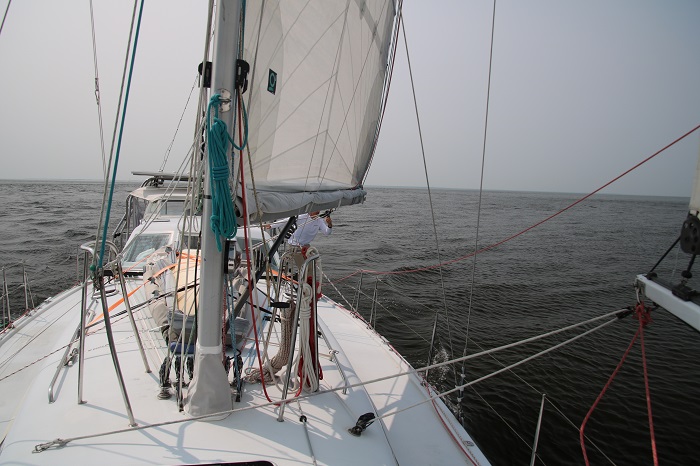 Finally, as we entered our 11th day at sea, the Saybrook Light marking the entrance into the CT River.
Finally, as we entered our 11th day at sea, the Saybrook Light marking the entrance into the CT River.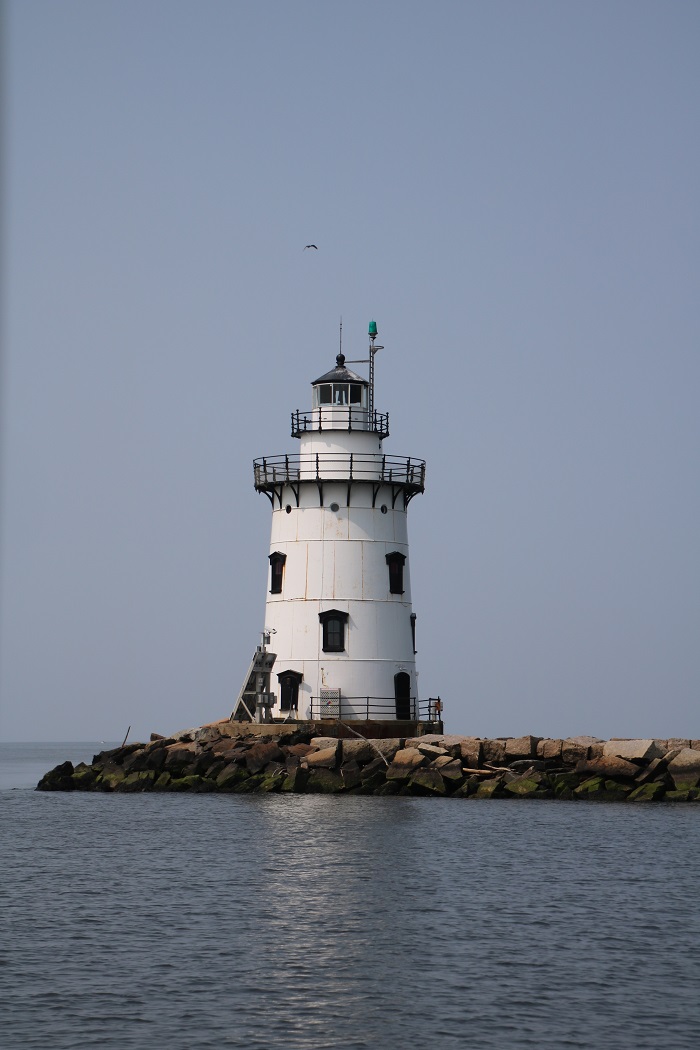 We continued up the river, dropped the sails and contacted the Old Lyme Drawbridge. George, who was at the helm, put the engine in neutral.
We continued up the river, dropped the sails and contacted the Old Lyme Drawbridge. George, who was at the helm, put the engine in neutral.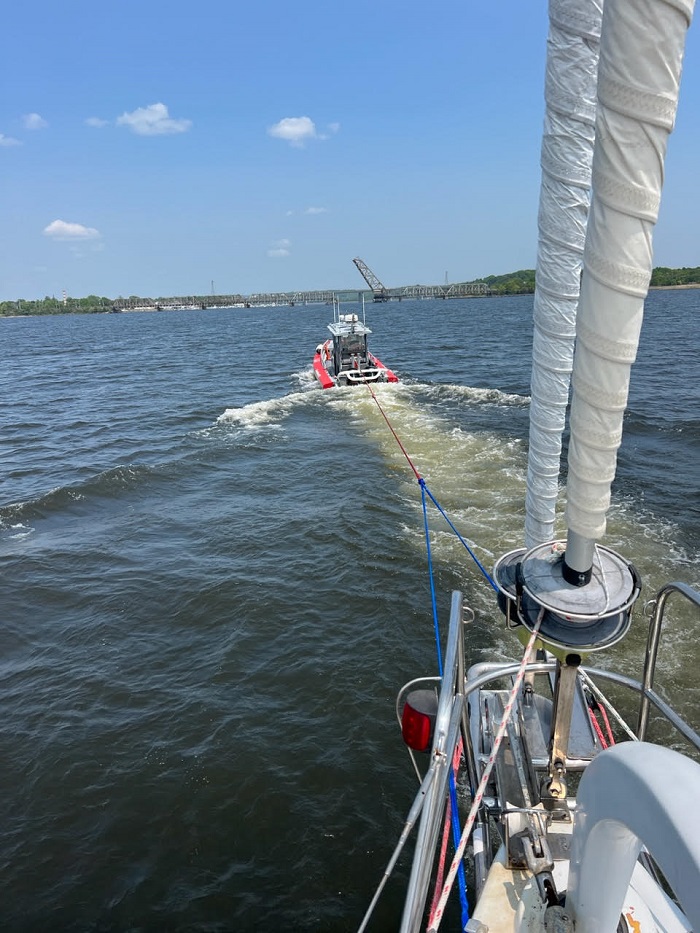 As the tow began to build speed, the prop spun wildly and fully separated from the coupling, threating to back out entirely with nothing to hold it from dropping out to the bottom but the shaft zincs. I had to secure it with an abrasive pad and Vicegrip pliers.
As the tow began to build speed, the prop spun wildly and fully separated from the coupling, threating to back out entirely with nothing to hold it from dropping out to the bottom but the shaft zincs. I had to secure it with an abrasive pad and Vicegrip pliers. 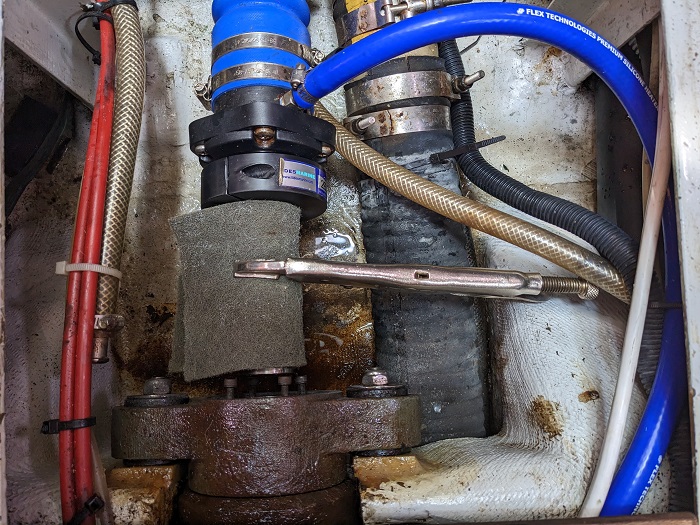 After that, a side tow the rest of the way and a lot slower.
After that, a side tow the rest of the way and a lot slower. 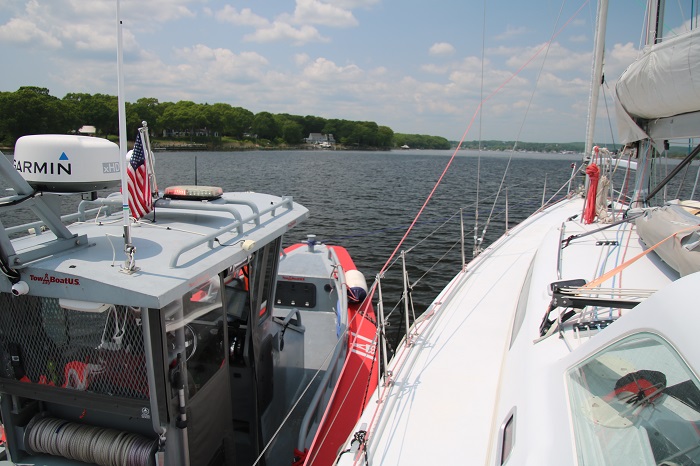 Finally, on the mooring and a hearty thankyou to our rescuer.
Finally, on the mooring and a hearty thankyou to our rescuer.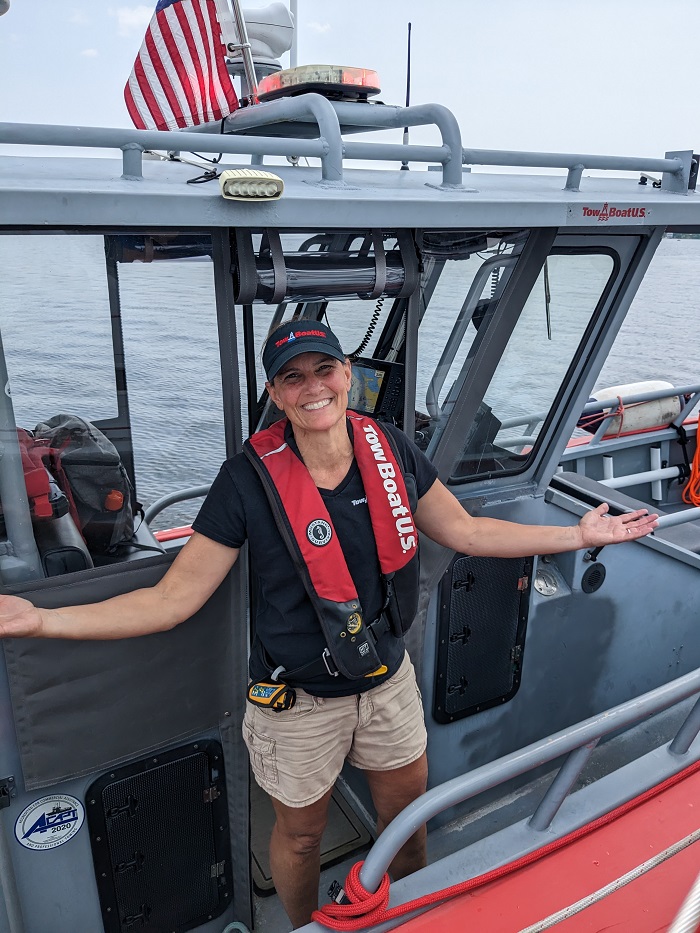 We made it. A happy crew all around.
We made it. A happy crew all around. 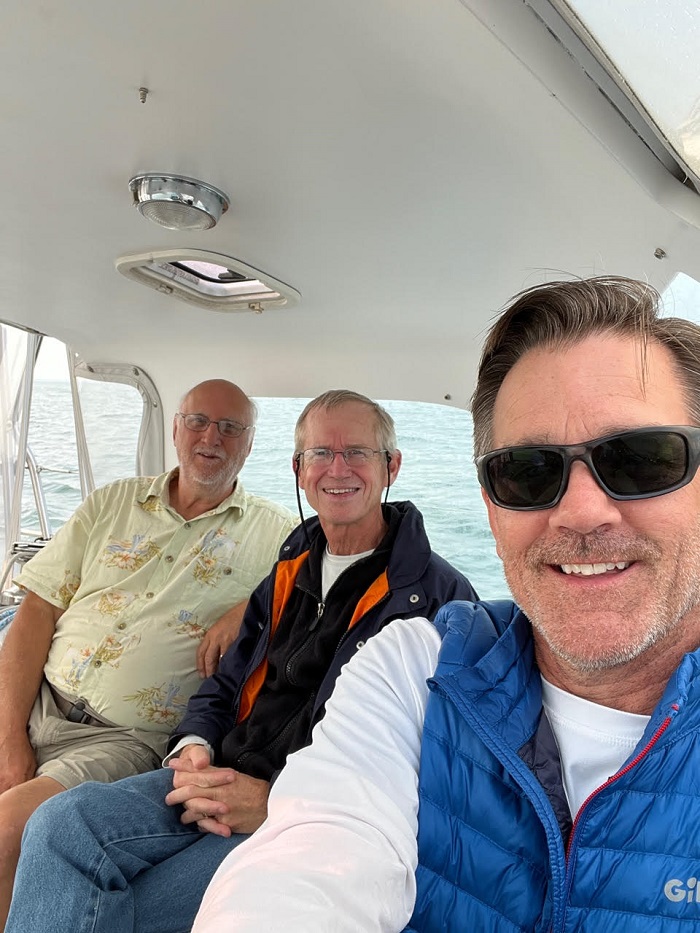 Every year I seriously think about leaving Pandora in Trinidad and never do. And, about half way home I begin to really question my decision and this year was no different.
Every year I seriously think about leaving Pandora in Trinidad and never do. And, about half way home I begin to really question my decision and this year was no different.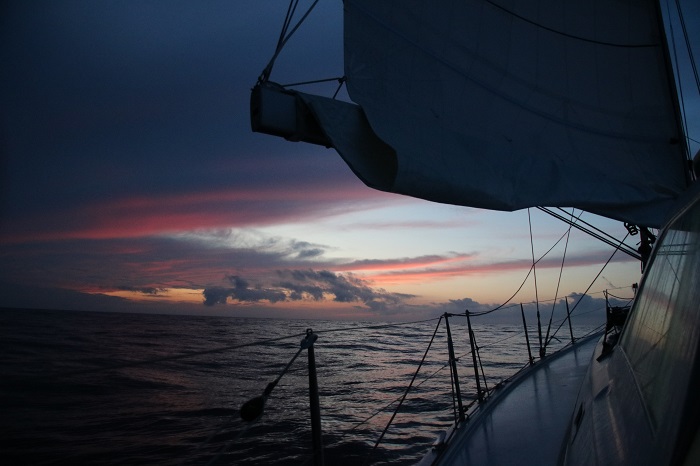 Up came the sun.
Up came the sun. 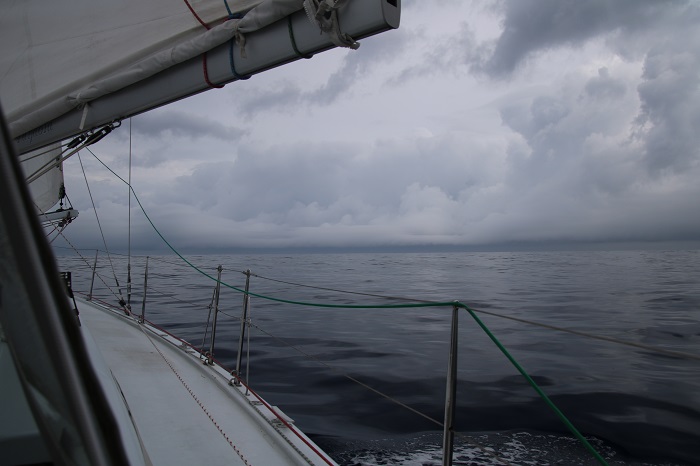 I’d love to share the weather routing information that we prepared based on Chris’s recommendations but can’t find a way to download the images from my iPad. I guess I will have to show it later.
I’d love to share the weather routing information that we prepared based on Chris’s recommendations but can’t find a way to download the images from my iPad. I guess I will have to show it later.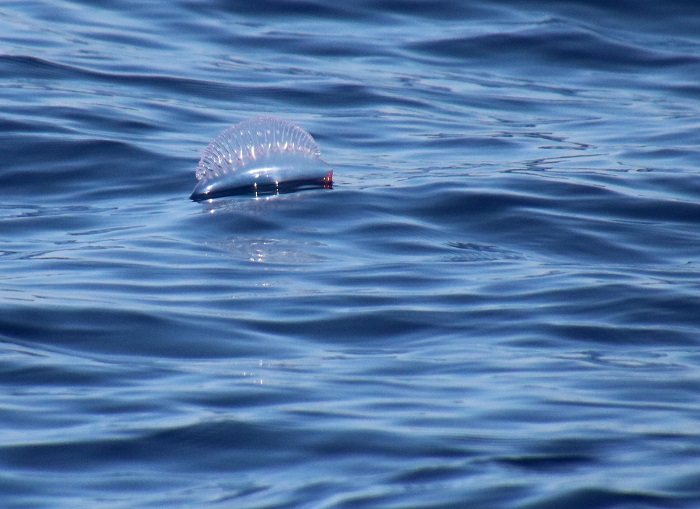 Brenda and I have seen many of these as we sailed along the US east coast, particularly off Florida when we were spending our winters in the Bahamas. There was a time when we were in Boca Raton and several were blown thru the inlet and into the harbor. Brenda was inspired to do a tapestry that she titled “blown off course”.
Brenda and I have seen many of these as we sailed along the US east coast, particularly off Florida when we were spending our winters in the Bahamas. There was a time when we were in Boca Raton and several were blown thru the inlet and into the harbor. Brenda was inspired to do a tapestry that she titled “blown off course”.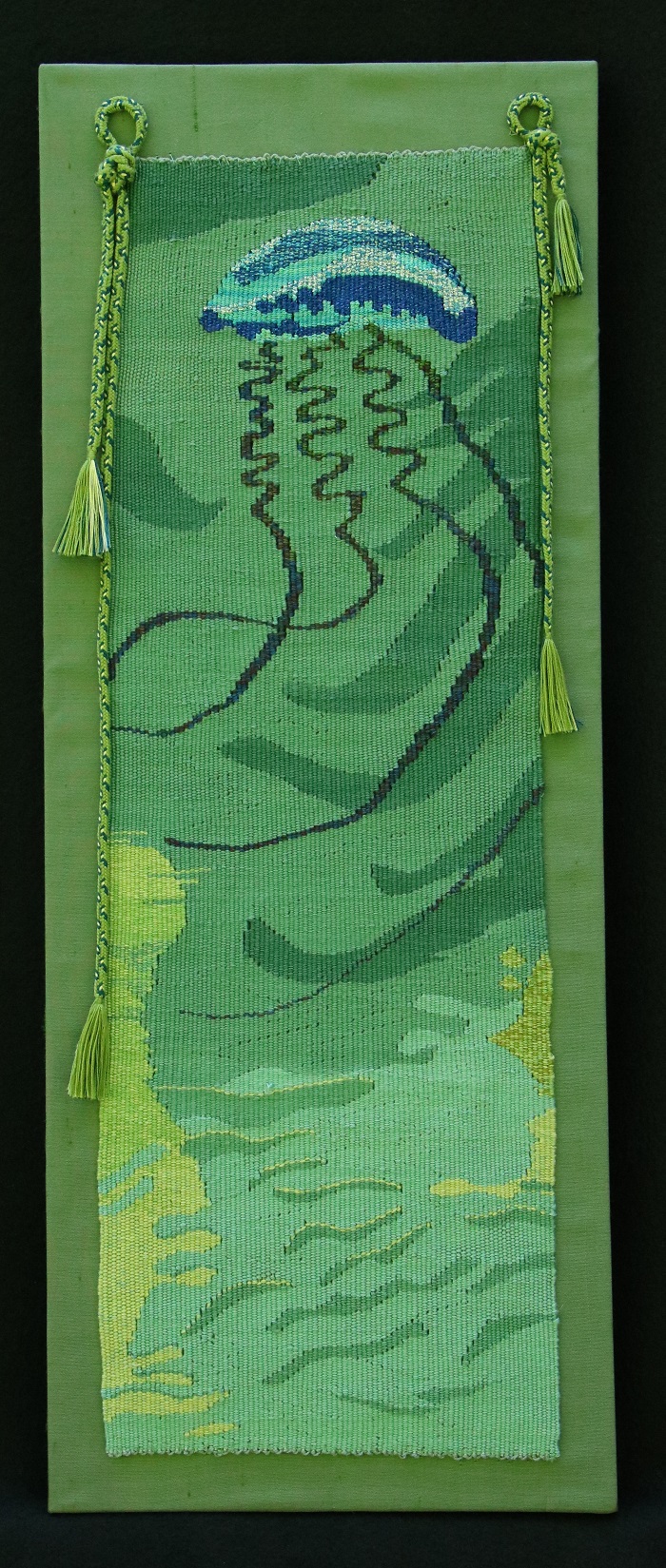 I think that this piece is one of her best and others seem to agree as she has received several awards at shows and the piece was featured in a national fiber arts magazine last year. It is worth noting that the “braids” affixed to the borders are a Japanese technique that she does. These intricate silk braids are hard to do but she has had a lot of practice.
I think that this piece is one of her best and others seem to agree as she has received several awards at shows and the piece was featured in a national fiber arts magazine last year. It is worth noting that the “braids” affixed to the borders are a Japanese technique that she does. These intricate silk braids are hard to do but she has had a lot of practice.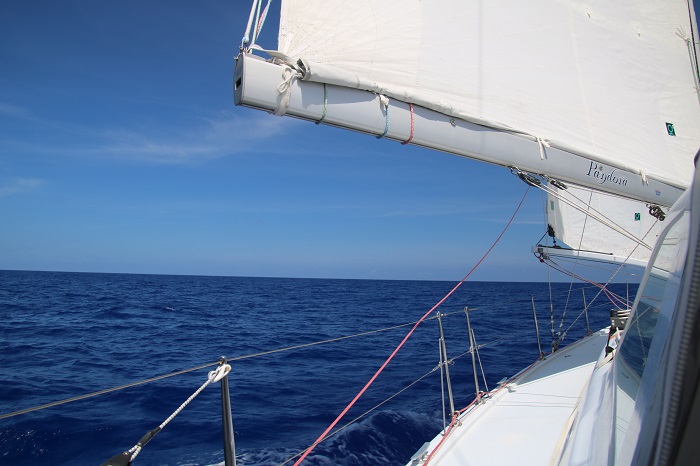 Mike relaxing, keeping an eye on things. However, we have not seen much for days beyond an occasional ship or two.
Mike relaxing, keeping an eye on things. However, we have not seen much for days beyond an occasional ship or two.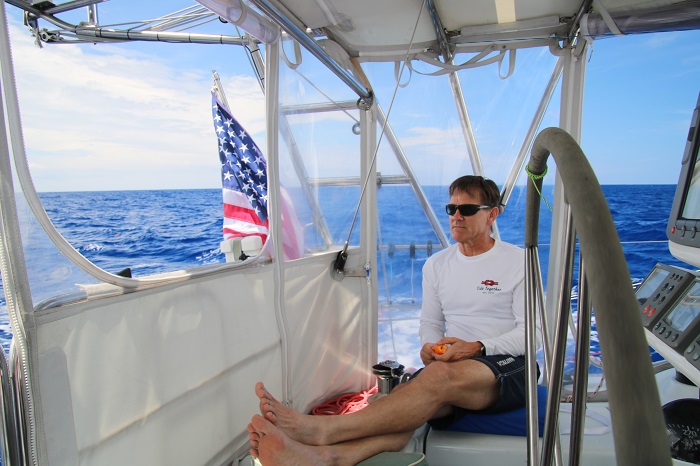 One way or the other, we will sort it out and just deal with whatever comes our way. For now, easy sailing.
One way or the other, we will sort it out and just deal with whatever comes our way. For now, easy sailing.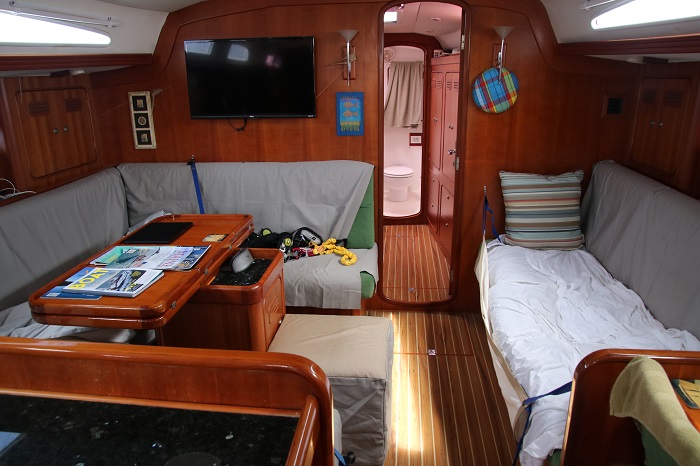 George is using the aft cabin, Mike to port (left) and me on the right. The center of the boat, the main cabin, has the least motion.
George is using the aft cabin, Mike to port (left) and me on the right. The center of the boat, the main cabin, has the least motion.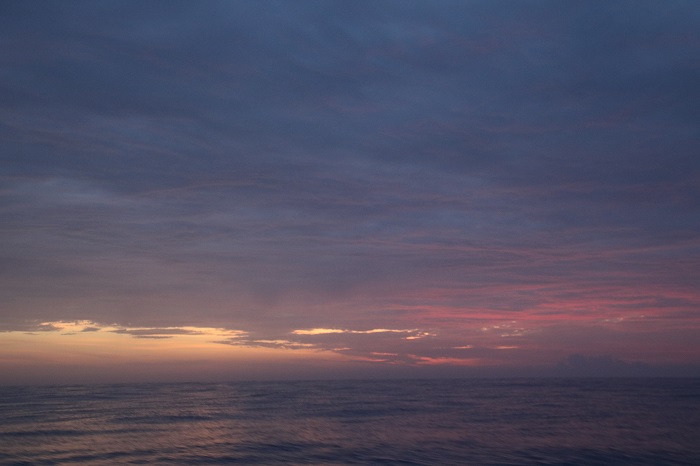 Getting brighter and brighter as the sun began to peek from behind the low clouds showing off the lacey clouds above.
Getting brighter and brighter as the sun began to peek from behind the low clouds showing off the lacey clouds above. 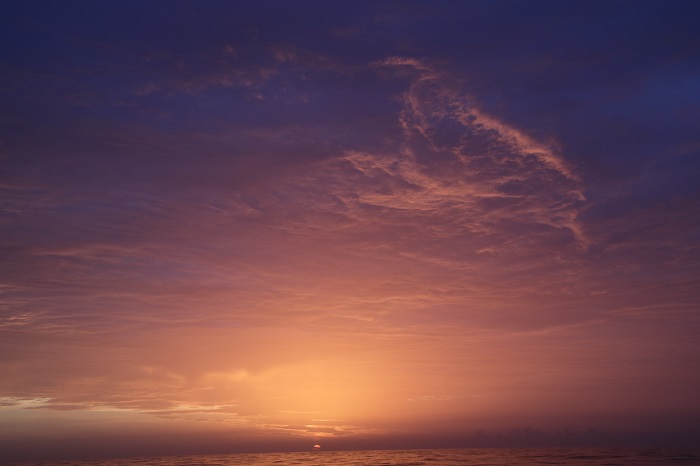 The sun, nearly above the horizon, a testament to the majesty of nature.
The sun, nearly above the horizon, a testament to the majesty of nature. 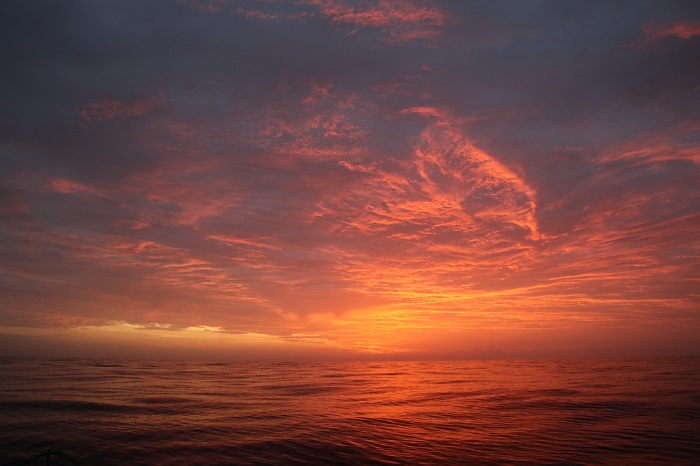 A beautiful day has dawned.
A beautiful day has dawned. 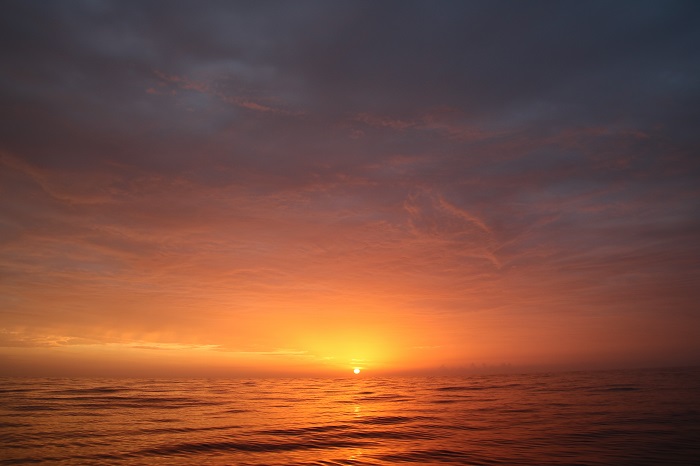 Well, to be clear, it’s a beautiful day with no wind.
Well, to be clear, it’s a beautiful day with no wind.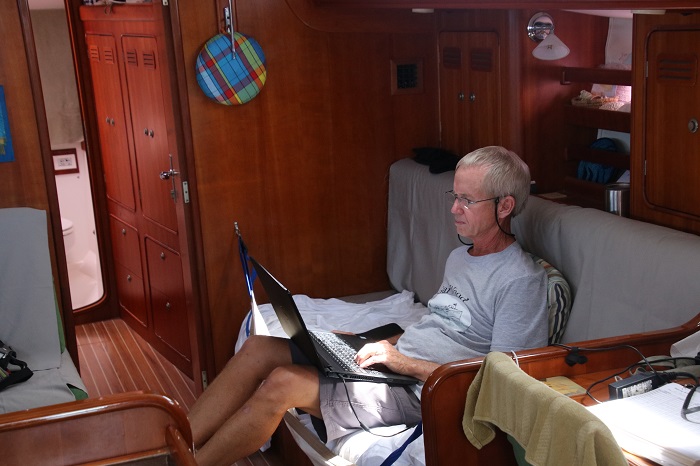 And, my blog, which I have been keeping for more than 13 years now, is so much simpler. In past years, when I was on passage, I put the blog text into an email and sent it to Brenda or whomever was available to post it for me and they would log into my blog and put up the post for me. And, getting a photo to them. Forget it.
And, my blog, which I have been keeping for more than 13 years now, is so much simpler. In past years, when I was on passage, I put the blog text into an email and sent it to Brenda or whomever was available to post it for me and they would log into my blog and put up the post for me. And, getting a photo to them. Forget it.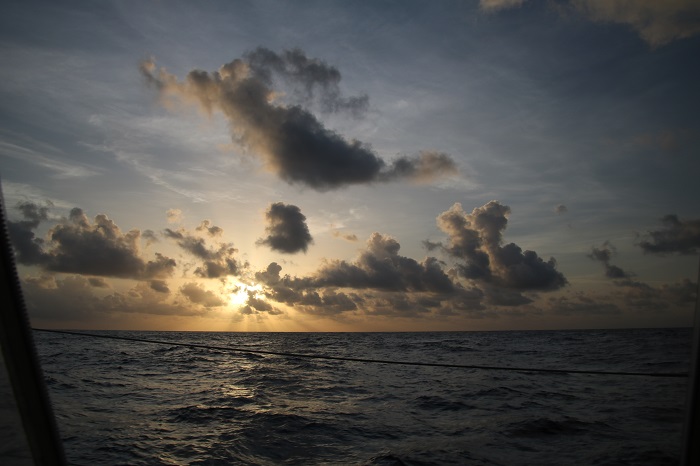 Just one year ago I purchased an Iridium Go transponder that allowed me to get email and weather information in an easy-to-use package. Between the unit and external antenna it cost me about $900 and I did the installation myself. The unit worked very well and didn’t use much power. However, it was very limited and I could only get email from a dedicated address and it was VERY SLOW: think dial up speeds.
Just one year ago I purchased an Iridium Go transponder that allowed me to get email and weather information in an easy-to-use package. Between the unit and external antenna it cost me about $900 and I did the installation myself. The unit worked very well and didn’t use much power. However, it was very limited and I could only get email from a dedicated address and it was VERY SLOW: think dial up speeds.